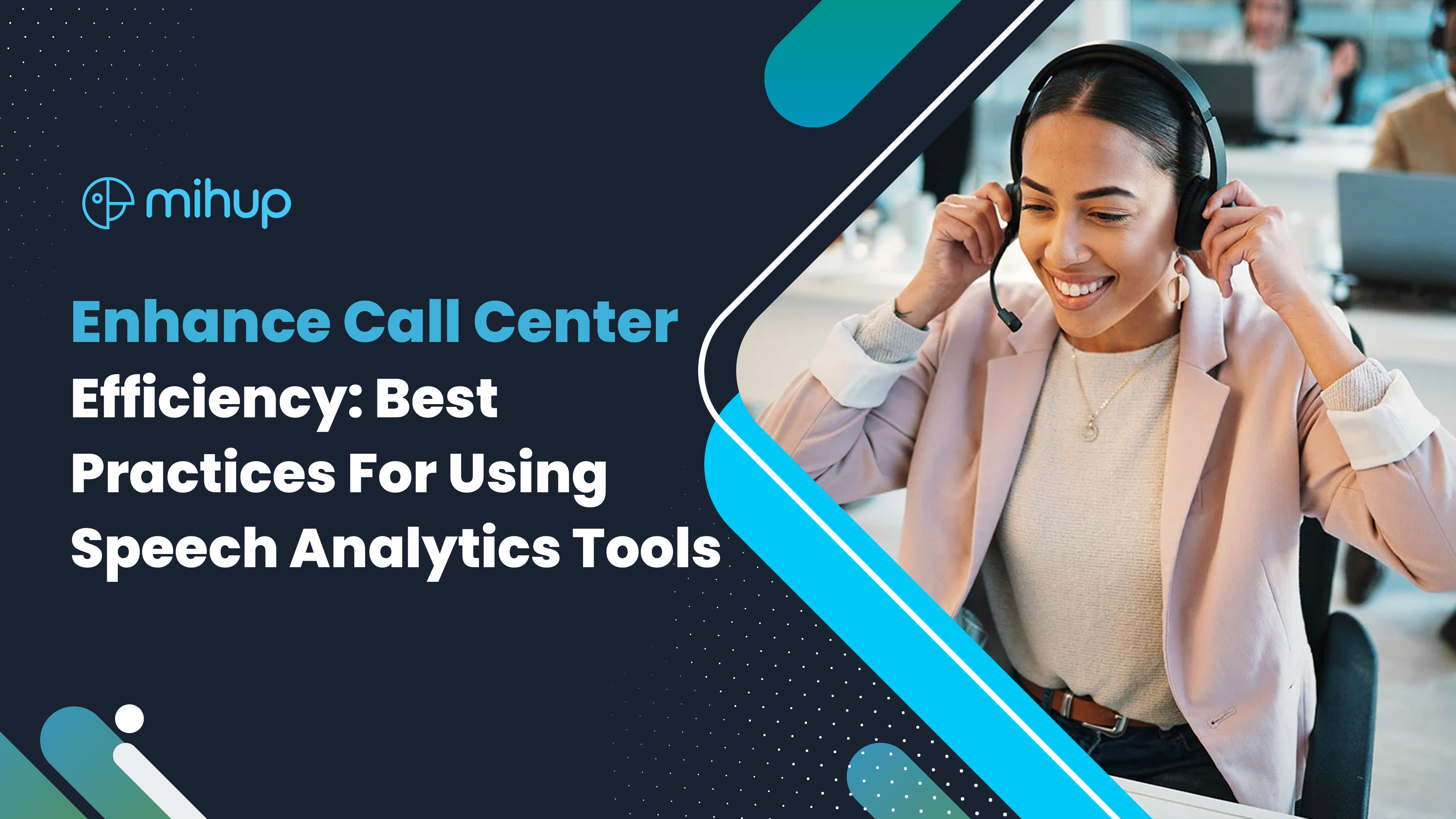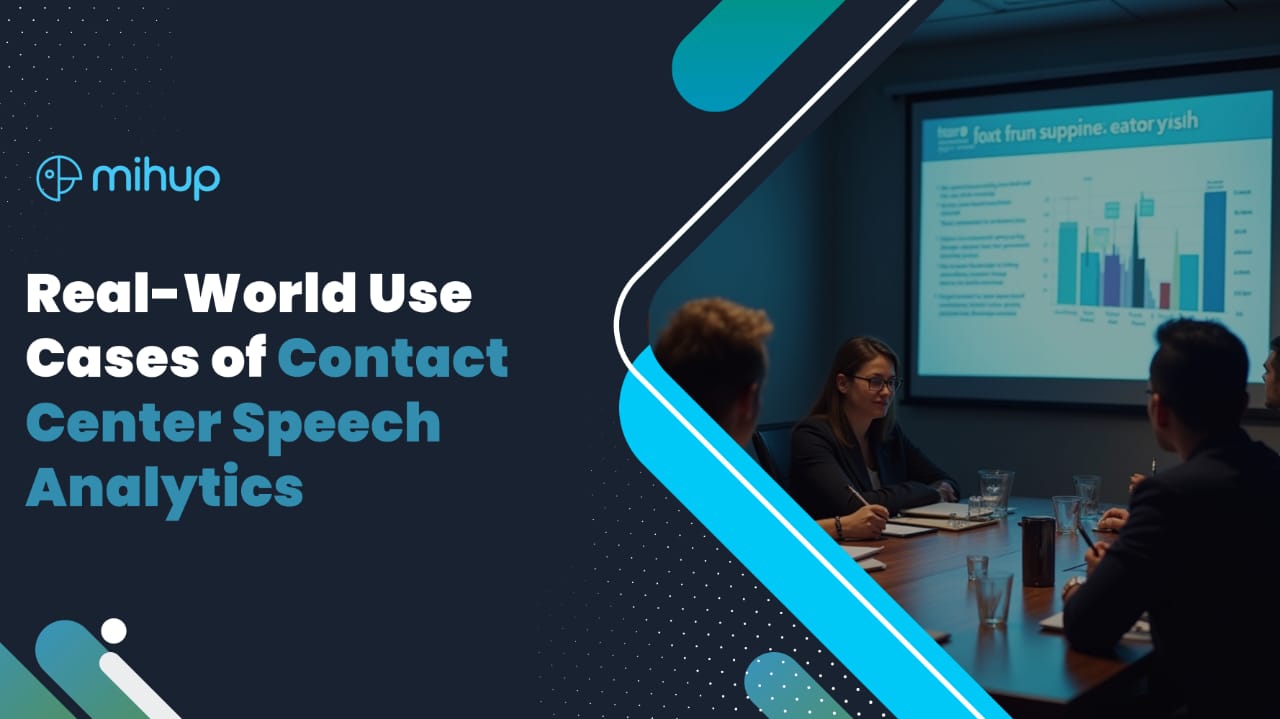If you wish to enhance your customer experience, then integrating speech analytics into your call center is the best option. Why? Well, Artificial Intelligence (AI) has already made its way into the call center Industry. AI speech analytics in the call center is one of the innovative technologies enabling call centers to analyze and understand customer interactions better. Speech analytics tools have become essential for achieving these goals by analyzing customer interaction and extracting valuable insights.
Utilizing this software requires more than simply connecting it to a system and letting it run. Call centers need to take proactive steps to comprehend its functionality, explore its diverse applications, and ensure seamless integration within the company. In this blog, we have a comprehensive list of tips, benefits, and best practices for speech analytics in call centers. This guide is designed to help companies across all sectors maximize the potential of their speech analytics software.
Understanding speech analytics
Speech analytics is a technology that can listen to audio conversations and analyze the nature of calls by converting spoken words from those recorded calls into structured data. This gathered data is then analyzed to uncover trends, patterns, context, and actionable insights. Speech analytics call center tools utilize advanced algorithms and AI to transcribe and interpret conversations, focusing on the calls’ content and context.
Call center speech Analytics:
Have you ever wondered how contact center speech analytics work? We all know human speech is incredibly complex. Sometimes we struggle to say what we mean, stumbling words, and repeat words. Therefore, any solution aiming to thoroughly analyze and understand human speech must leverage artificial intelligence equipped with advanced natural language processing (NLP) technology.
In call center environments, metrics, insights, and speech characteristics are represented to contact center managers and agents for enhancing their performance and customer service. This could involve conflict resolution strategies, assessing agent performance, scoring, and ensuring adherence to scripts.
By using advanced analytics tools, call centers can automatically detect and respond to nuanced aspects such as effort, intent, emotion, intensity, and sentiment conveyed both through customers’ tone and their choice of words.
Explore the top speech analytics software solutions available in India
Here’s a step-by-step overview of how call center speech analytics tools work by capturing and analyzing the audio of customer calls:
- Audio Capture: Calls are recorded in real-time to capture the spoken interactions.
- Transcription: The captured audio is converted into text using natural language processing (NLP) techniques, ensuring accuracy and clarity.
- Analysis: The transcribed text undergoes comprehensive analysis, focusing on identifying keywords, phrases, sentiment, and emotional tone to extract meaningful insights.
- Reporting: Insights derived from the analysis are compiled and presented through intuitive dashboards and detailed reports, enabling contact center managers and agents to make informed decisions and enhance customer service effectively.
What can be done with the data?
Collecting data becomes valuable only when you can understand how to leverage it and transform the data into actionable insights. Here are specific practical applications and customer retention strategies that contact centers can implement using data derived from call center speech analytics:
- Enhanced Customer Insights: Understand customer needs and trends on a large scale, such as identifying issues like flight booking preferences.
- Real-time Performance Monitoring: Monitor agent performance in real-time, assessing metrics like empathy and issue resolution to offer timely coaching.
- Predictive Analytics: Anticipate and address issues before they escalate, such as identifying spikes in call volumes and potential customer satisfaction risks.
- Personalized Customer Interactions: customize customer interactions based on past behaviors and preferences, ensuring a more personalized experience.
Benefits of Speech analytics in call centers
Call centers play a very essential role in business success by efficiently addressing customer queries and issues quickly with empathy and transforming detractors into advocates which helps in building long-term relationships. Utilizing speech analytics call center tools enhances contact center agents’ performance by replacing guesswork with deep insights into customer thoughts, emotions, and behaviors. This integration of science into human interaction leverages real-time datasets that would otherwise be overwhelming to manage manually.
Here are the key business advantages of integrating speech analytics call center into your operations:
Improved Customer Satisfaction
Speech analytics tools enable call centers to understand customer sentiment and address issues promptly. Real-time analysis helps in tailoring responses to meet customer expectations, resulting in higher satisfaction levels.
Enhanced Agent Performance
By monitoring calls and providing detailed feedback, speech analytics tools help improve agent performance. Identifying common challenges and providing targeted coaching can lead to more effective interactions and better service quality.
Operational Efficiency
Call center speech analytics streamlines operations by reducing call handle times and improving first-call resolution rates. Analyzing call patterns helps in resource allocation and optimizing workflows, leading to cost savings.
Compliance and Risk Management
AI speech analytics ensures that calls comply with regulatory requirements by monitoring for adherence to scripts and policies. It also helps in identifying and mitigating potential risks, such as fraud or compliance breaches.
Best practices for implementing speech analytics tool
We’ve understood that implementing speech analytics tools in call centers is essential for enhancing operational efficiency and improving customer service. By harnessing the power of call center voice analytics, organizations can gain valuable insights from customer interactions to drive decision-making and optimize performance.
Here are key best practices to consider when implementing speech analytics tools:
Selecting the Right Tool
Choosing the right speech analytics tool is crucial. Consider factors like scalability, integration capabilities, user-friendliness, and the ability to provide real-time insights. Evaluate multiple options to find the tool that best fits your call center’s needs. Do check this platform Mihup.ai which supports agents with real-time cues, coaching, and automation. It boosts sales and retention with an integrated voice recorder for seamless operations.
Data Privacy and Security
Maintaining data privacy and security is essential when using speech analytics tools. Ensure the tool complies with data protection regulations and implements robust security measures to protect sensitive customer information.
Training and Onboarding
Effective use of speech analytics tools requires comprehensive training and onboarding. Provide thorough training to agents and staff on how to utilize the tool’s features. Encourage continuous learning and adaptation to keep up with technological advancements.
Regular Monitoring and Evaluation
Regularly monitor and evaluate the performance of the speech analytics tool. Track key performance indicators (KPIs) such as customer satisfaction scores, agent performance levels, and call resolution rates to assess the tool’s impact and make necessary adjustments.
Future of Speech Analytics
The global market for speech analytics is projected to reach US$5.9 billion by 2027, with a forecasted CAGR exceeding 22%. This makes speech analytics one of the main growth drivers for businesses and one of the fastest-growing segments in call center management technology.
What does this mean practically? As businesses increasingly embrace speech analytics and its associated technologies, they gain the ability to respond promptly to customer needs in real time. Virtually every sector, including healthcare, financial services, utilities, automotive, and travel, is expected to adopt speech analytics software widely.
If your organization has not yet implemented speech analytics or included it in your roadmap for the next 12 months, you’re at the risk of being left far behind in the race for this technology.
Personalization is the key
Lastly, adopting speech analytics tools in call centers is crucial for staying competitive in today’s customer-centric landscape. By following best practices—selecting the right tool, ensuring data privacy, providing thorough training, and continuously monitoring performance—call centers can reap the full benefits of speech analytics. Embrace these practices to transform your call center operations and deliver exceptional customer service. Personalization, powered by insights from speech analytics, is the key to building strong, lasting customer relationships.





